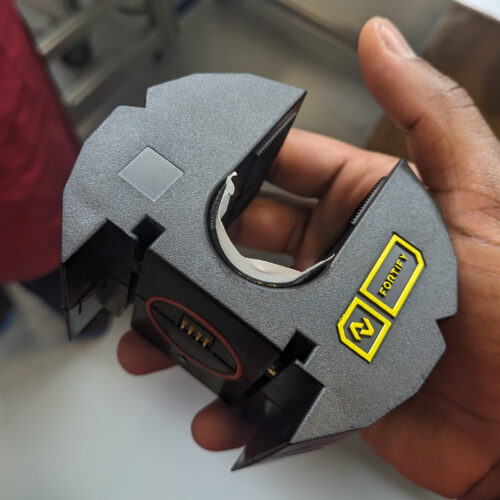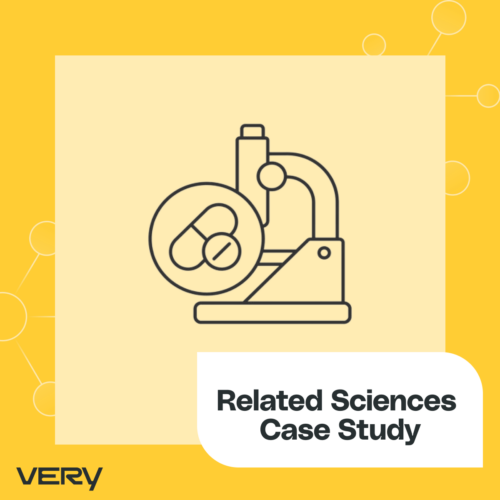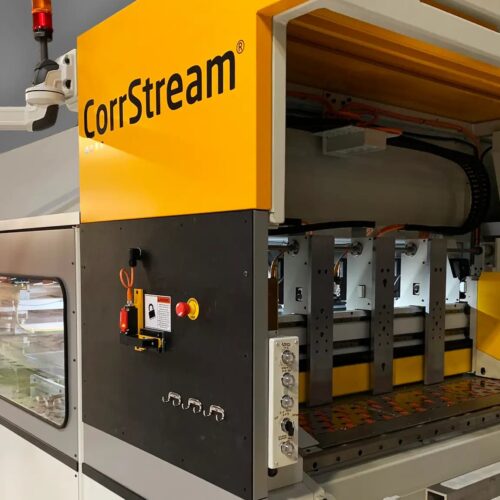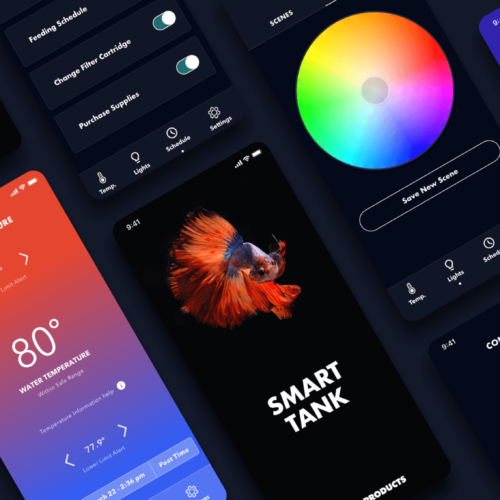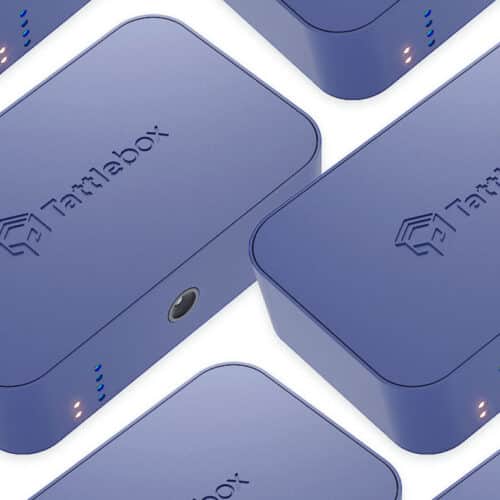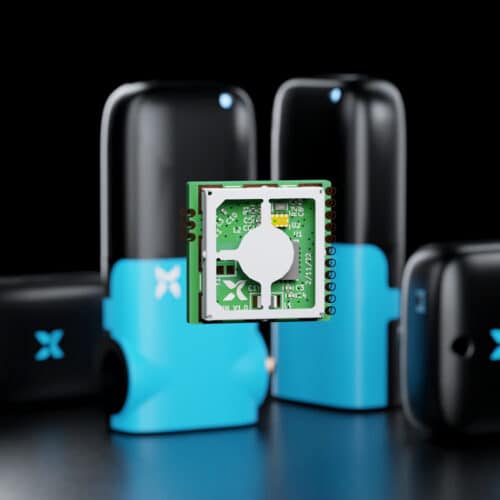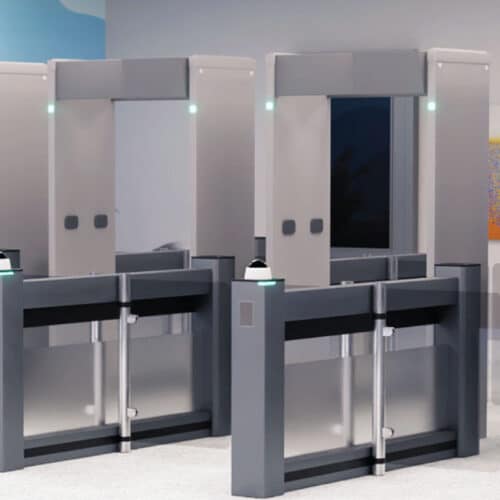The Power of Predictive Analytics To Reduce Turnover
Harnessing the power of predictive analytics, we created a platform that reliably predicts burnout and turnover based on internal communication patterns. Now, leadership has the insights they need to take preventative action.
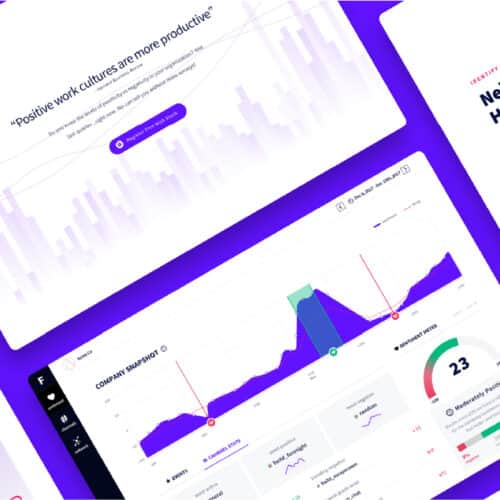
Technology Services Company
A tech firm focused on creating unique predictive tools to measure company health
IoT Solutions
Software Development, Product Design, Machine Learning
Project Timeline
12 weeks
Tech Stack
Elixir, AWS, React
Employees across the country are reporting that the candle is burning quickly from both ends. It’s not called the Great Resignation for nothing: employees are quick to suffer stress-related burnout and subsequently hand in their resignation letters, resulting in huge losses for their respective employers.
A client called upon us to answer a fundamental question: instead of retroactively assessing what went wrong, what if companies could prevent the organizational missteps that cause burnout in the first place?
The Challenge
Workplace interactions have evolved significantly since the dawn of the digital age – and especially since Covid-19. Gone is the era of banter circling the water cooler; today, colleagues communicate predominantly on digital channels like Slack and Zoom.
After several of their core team members left without warning, our client approached us for a predictive analytics solution that could reduce turnover. Like most companies, the client had gone digital, relying primarily on Slack for internal communications.

As we considered the problem at hand (and our own experience using Slack), we realized that technology can be a barrier to workplace empathy. When Slack and email replace face-to-face interactions, it’s much easier for small signs of unhappiness to slip by undetected. Even still, employees tend to leave subtle clues about their emotional state in their digital communications.
There are robust, real-time measurement and reporting tools that assess the health of systems infrastructure. Why couldn’t there be something similar to monitor employee morale?
The Process
Solving the employee burnout issue required complex analysis of several variables. Our first order of business was to truly understand the root cause of the issue. We couldn’t begin without knowing: “What causes burnout?”
We turned to Christina Maslach, a social psychologist at the University of California (Berkeley), who’s been researching occupational burnout for decades and is widely recognized as the predominant subject matter expert.
People ultimately burn out because of a mismatch between the job and the individual, according to Maslach. While many managers incorrectly assume that burnout is an individual employee problem, it’s actually a response to chronic stressors in the workplace. Preventing burnout requires changes to the work environment itself.
This discovery led us to our next challenge: determining what signals an employee’s potential departure. We brainstormed ways to leverage the primary communication tool employees use every day – Slack – as a data source.
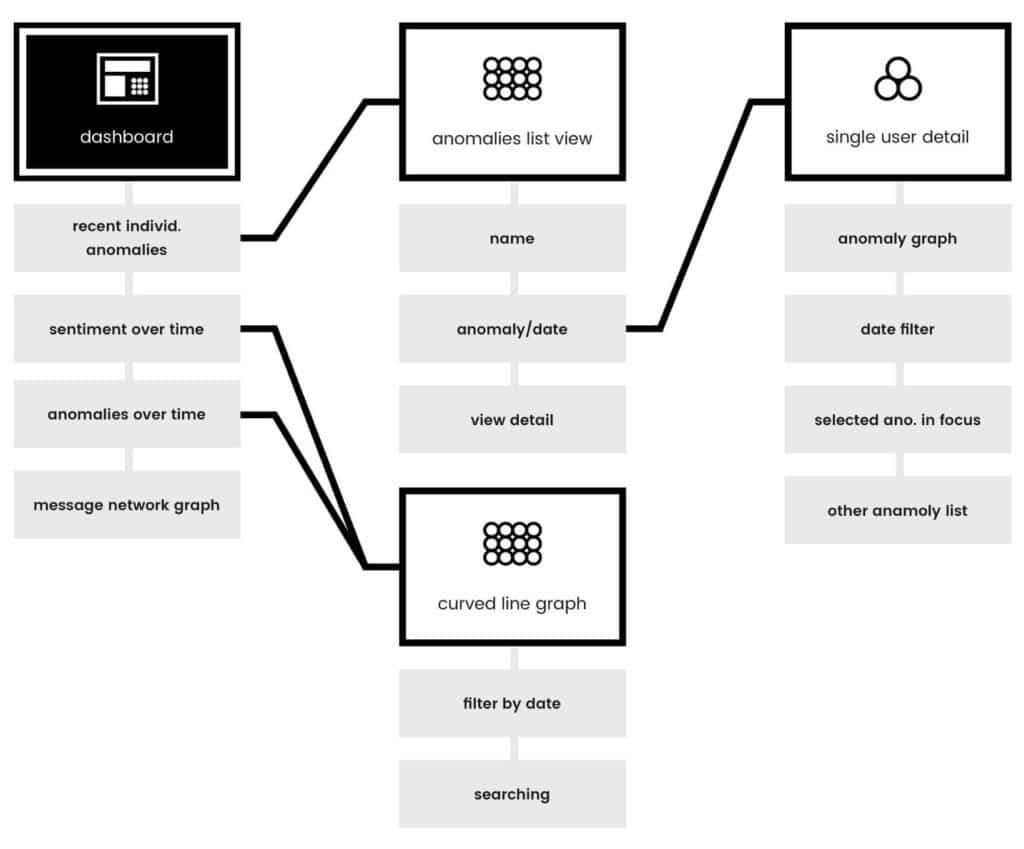
Hypothesis
We hypothesized that subtle variations in punctuation, message length, word choice, time of day, grammatical correctness, and other variables are markers for a person’s emotional state. Markers are unique and virtually undetectable by others. However, we knew that machine learning and statistics-based algorithms could identify patterns and anomalies in these communications, predicting the likelihood of an employee, a team, or even an entire company experiencing burnout.
The Build
To kick off the development process, we designed small-scale models to validate the general direction in which we were headed. This initial phase yielded promising results, so we moved on to develop a robust data pipeline that could ingest real-time events from Slack. The data pipeline extracted features from each message, including grammatical errors, sentiment, emoji usage, and readability (scored as a Flesch reading level) on a per-message basis.
As we worked to arrive at an MVP, we began developing more complex analysis tools using natural language processing and statistics to visualize the flow of information within the company, identify communication silos and bottlenecks, and measure the level of collaboration among team members and across teams.
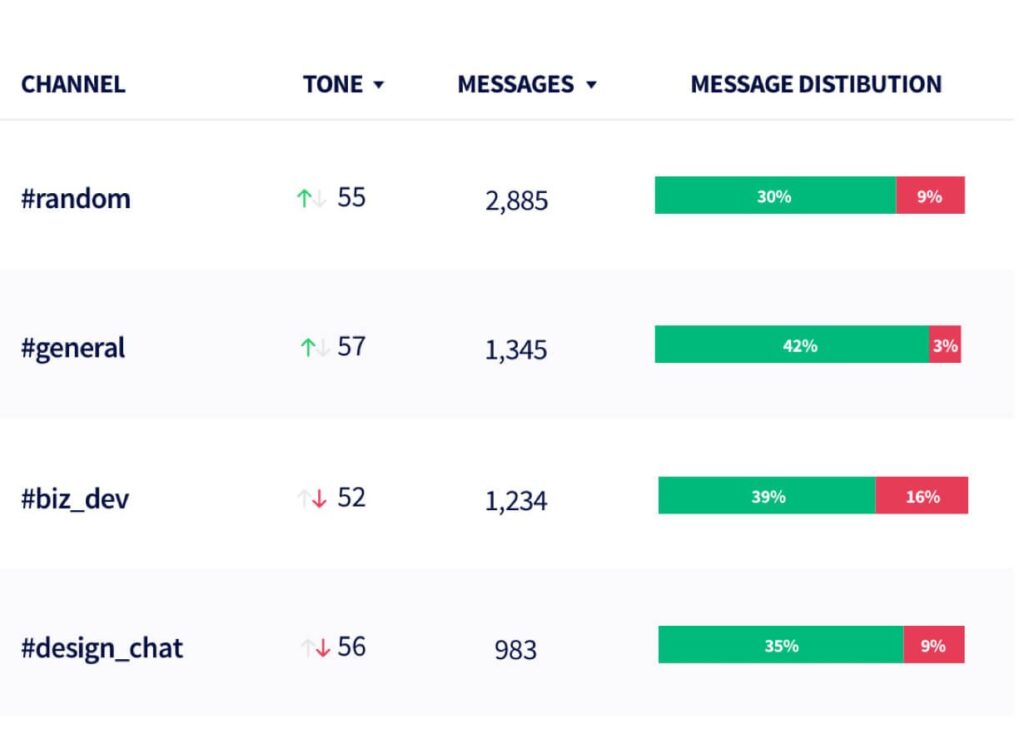
While these measurements were invaluable, they didn’t accomplish the goal of predicting burnout before it happened. Reassessing our approach, we stepped back and applied anomaly detection, a common pattern utilized in infrastructure monitoring.
Individual employees possess unique communication patterns, just like each has a unique fingerprint. By measuring when and how employees diverged from their normal communication patterns, we were able to identify several different clusters of anomalies. Armed with those data points, we could correlate certain kinds of anomalies to negative events, such as voluntary employee turnover.
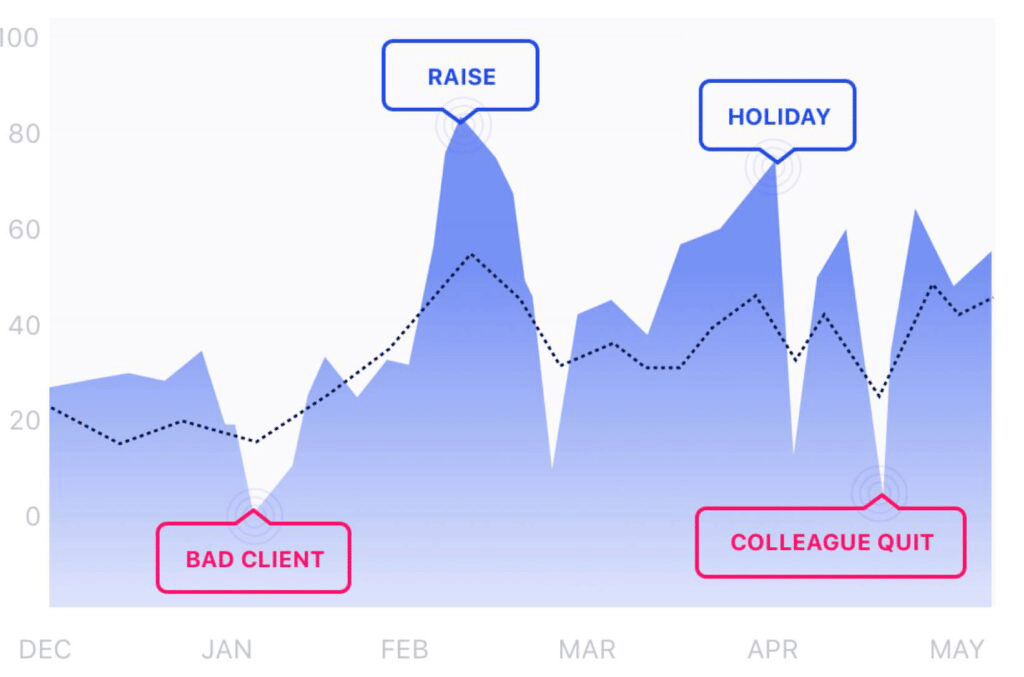
The Results
After a year in use, the results of our predictive analytics platform were astounding, even to us. Utilizing machine learning services, we identified individuals who were likely to turnover due to burnout in the next 90 days with 79% accuracy. With access to additional data, we expect to achieve greater than 90% accuracy and a longer future-looking time window.
By providing real-time sentiment analysis, collaboration graphs, and topic clustering on a team and company level, leaders have benefited from understanding how their actions impact their direct reports and whether their team’s communication health is within normal ranges compared to the rest of the company.
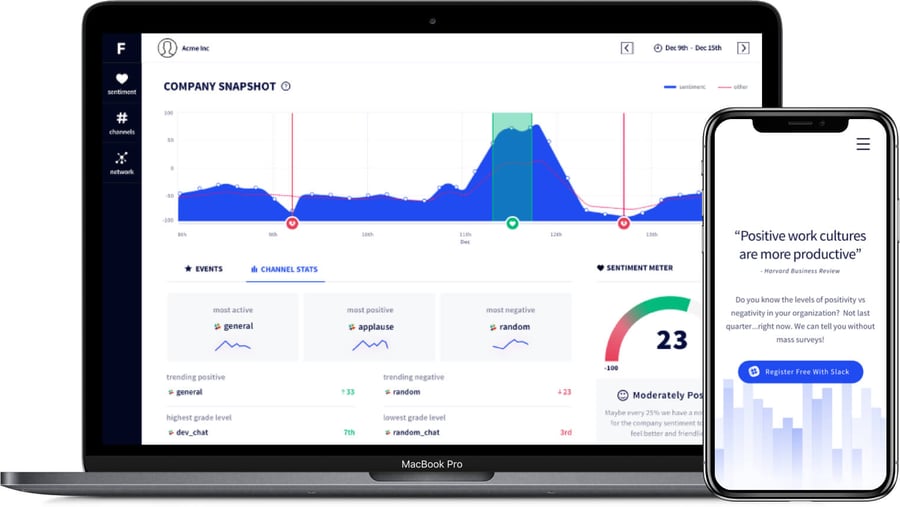
With our predictive analytics solution, the client experienced a 950% reduction in voluntary turnover, which translates to approximately $10 million in savings annually.
Our client’s forward-thinking leaders – armed with advanced analytics – now have the insights they need to take preventative actions before workplace issues turn into burnout.
Do You Have a Complex Issue To Solve?
Very is big on out-of-the-box thinking. In fact, we’d go so far as to argue there is no box at all. We like to test the boundaries of what’s possible and prove naysayers wrong, embarking on cutting-edge IoT endeavors that have the potential to fundamentally change the world for good.
If you have a complex issue to solve, get in touch with us – we’re happy to explore solutions.
Let's talk about your vision for a powerful IoT solution.

